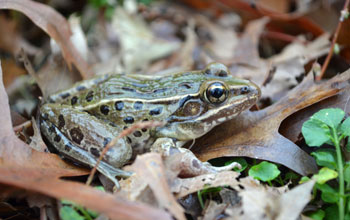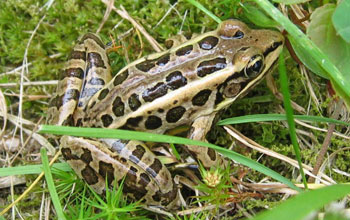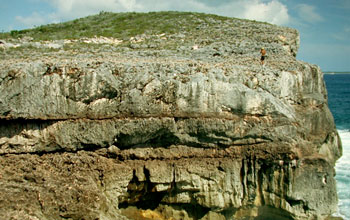The right strategy doesn't guarantee advantage in auctions, real estate or stock market
Who wouldn't pay a penny for a sports car? That's the mentality some popular online auctions take advantage of -- the opportunity to get an expensive item for very little money.
 Credit: Wikipedia
Credit: Wikipedia
In a study of hundreds of lowest unique bid auctions, Northwestern University researchers asked a different question: Who wins these auctions, the strategic gambler or the lucky one? The answer is the lucky. But, ironically, it's a lucky person using a winning strategy.
The researchers found that all players intuitively use the right strategy, and that turns the auction into a game of pure chance. The findings, published by the journal PLoS One, provide insight into playing the stock market, real estate market and other gambles.
"There are many contexts in which we think we are smart and at an advantage, such as buying real estate as prices start moving up," said Luís Amaral, an author of the paper. "But we don't realize we are competing against people doing the same thing. The advantage is gone, and it becomes a game of chance. So you better enjoy the process."
Amaral is a professor of chemical and biological engineering in the McCormick School of Engineering and Applied Science and an Early Career Scientist with the Howard Hughes Medical Institute.
He and colleagues Filippo Radicchi and Andrea Baronchelli studied public data on 600 online auctions in Australia and Europe, played by 10,000 different auction participants with a total of 200,000 individual bids. (Lowest unique bid auctions occur all around the world, including in the U.S.) The data allowed the researchers to analyze in a systematic way what is going on in each auction.
The work of Nobel Laureate John Nash on game theory is very relevant to these auctions, Amaral said. An online auction is a classic game -- you have some information and you try to guess what other people are doing, and, based on that guess, you try to define your best strategy.
In a lowest unique bid auction, participants place bids for a relatively valuable item, such as a car or boat, in an attempt to have the lowest unmatched bid at the time the auction ends. The lowest bid is one cent, and the participant pays a fee, often a dollar, for each bid. After placing a bid, the participant is told if his or her bid currently is winning. If not, many bid again. Hundreds of times. On average, the auctioneer earns double the cost of the item being auctioned while participants can pay hundreds of dollars to lose.
The researchers conducted a computer simulation and identified what the optimal strategy is in lowest unique bid auctions. They found the strategy is a "bursty" one: consecutive bid values initially are close to each other, and then there is a "long jump" to another area of the bid space where more bid values are placed close to each other. And the pattern is repeated.
For example, an auction participant might place a bid, say of 8 cents. Then he places a number of nearby bids, 5, 6 and 7 cents, as well as 9, 10 and 11 cents. Then he makes a large leap to a different area, placing a bid of 47 cents and also placing several bids around that number. (Remember, every time he places a bid, he pays a fee.)
This mixed strategy combines exploitation (taking small steps in one area) and exploration (taking a big step to a new area). It is a smart strategy that gives you a better chance of winning, but the researchers discovered all the other participants have figured it out, too, wiping out any advantage to individuals.
"We couldn't identify a single person who was not using this strategy," Amaral said.
The "bursty" optimal strategy, he said, is similar to what an animal foraging for scarce food employs. An albatross, for example, has a vast ocean to explore, so it focuses its fishing in a small area for a time and then moves a great distance to try another area. Then it repeats this pattern.
In lowest unique bid auctions, people like to win and become overly optimistic about the amount of money they will lose. They rationally enter the auction to try to win a valuable item for a low price, but then they go on to irrationally stay in the auction -- which is just a game of chance -- and bid too much.
"At some point people will stop playing these online auctions," Amaral said. "Humans are smart about recognizing the deck is stacked against them."
The title of the PLoS One paper authored by Amaral, Radicchi and Baronchelli is "Rationality, Irrationality and Escalating Behavior in Lowest Unique Bid Auctions." Radicchi is a former postdoctoral fellow in Amaral's lab who now is at the University Rovira i Virgili, Tarragona, Spain. Baronchelli is with the Universitat Politècnica de Catalunya, Spain.
Contacts and sources:
Who wouldn't pay a penny for a sports car? That's the mentality some popular online auctions take advantage of -- the opportunity to get an expensive item for very little money.
Lotus Super 7
 Credit: Wikipedia
Credit: Wikipedia In a study of hundreds of lowest unique bid auctions, Northwestern University researchers asked a different question: Who wins these auctions, the strategic gambler or the lucky one? The answer is the lucky. But, ironically, it's a lucky person using a winning strategy.
The researchers found that all players intuitively use the right strategy, and that turns the auction into a game of pure chance. The findings, published by the journal PLoS One, provide insight into playing the stock market, real estate market and other gambles.
"There are many contexts in which we think we are smart and at an advantage, such as buying real estate as prices start moving up," said Luís Amaral, an author of the paper. "But we don't realize we are competing against people doing the same thing. The advantage is gone, and it becomes a game of chance. So you better enjoy the process."
Amaral is a professor of chemical and biological engineering in the McCormick School of Engineering and Applied Science and an Early Career Scientist with the Howard Hughes Medical Institute.
He and colleagues Filippo Radicchi and Andrea Baronchelli studied public data on 600 online auctions in Australia and Europe, played by 10,000 different auction participants with a total of 200,000 individual bids. (Lowest unique bid auctions occur all around the world, including in the U.S.) The data allowed the researchers to analyze in a systematic way what is going on in each auction.
The work of Nobel Laureate John Nash on game theory is very relevant to these auctions, Amaral said. An online auction is a classic game -- you have some information and you try to guess what other people are doing, and, based on that guess, you try to define your best strategy.
In a lowest unique bid auction, participants place bids for a relatively valuable item, such as a car or boat, in an attempt to have the lowest unmatched bid at the time the auction ends. The lowest bid is one cent, and the participant pays a fee, often a dollar, for each bid. After placing a bid, the participant is told if his or her bid currently is winning. If not, many bid again. Hundreds of times. On average, the auctioneer earns double the cost of the item being auctioned while participants can pay hundreds of dollars to lose.
The researchers conducted a computer simulation and identified what the optimal strategy is in lowest unique bid auctions. They found the strategy is a "bursty" one: consecutive bid values initially are close to each other, and then there is a "long jump" to another area of the bid space where more bid values are placed close to each other. And the pattern is repeated.
For example, an auction participant might place a bid, say of 8 cents. Then he places a number of nearby bids, 5, 6 and 7 cents, as well as 9, 10 and 11 cents. Then he makes a large leap to a different area, placing a bid of 47 cents and also placing several bids around that number. (Remember, every time he places a bid, he pays a fee.)
This mixed strategy combines exploitation (taking small steps in one area) and exploration (taking a big step to a new area). It is a smart strategy that gives you a better chance of winning, but the researchers discovered all the other participants have figured it out, too, wiping out any advantage to individuals.
"We couldn't identify a single person who was not using this strategy," Amaral said.
The "bursty" optimal strategy, he said, is similar to what an animal foraging for scarce food employs. An albatross, for example, has a vast ocean to explore, so it focuses its fishing in a small area for a time and then moves a great distance to try another area. Then it repeats this pattern.
In lowest unique bid auctions, people like to win and become overly optimistic about the amount of money they will lose. They rationally enter the auction to try to win a valuable item for a low price, but then they go on to irrationally stay in the auction -- which is just a game of chance -- and bid too much.
"At some point people will stop playing these online auctions," Amaral said. "Humans are smart about recognizing the deck is stacked against them."
The title of the PLoS One paper authored by Amaral, Radicchi and Baronchelli is "Rationality, Irrationality and Escalating Behavior in Lowest Unique Bid Auctions." Radicchi is a former postdoctoral fellow in Amaral's lab who now is at the University Rovira i Virgili, Tarragona, Spain. Baronchelli is with the Universitat Politècnica de Catalunya, Spain.










